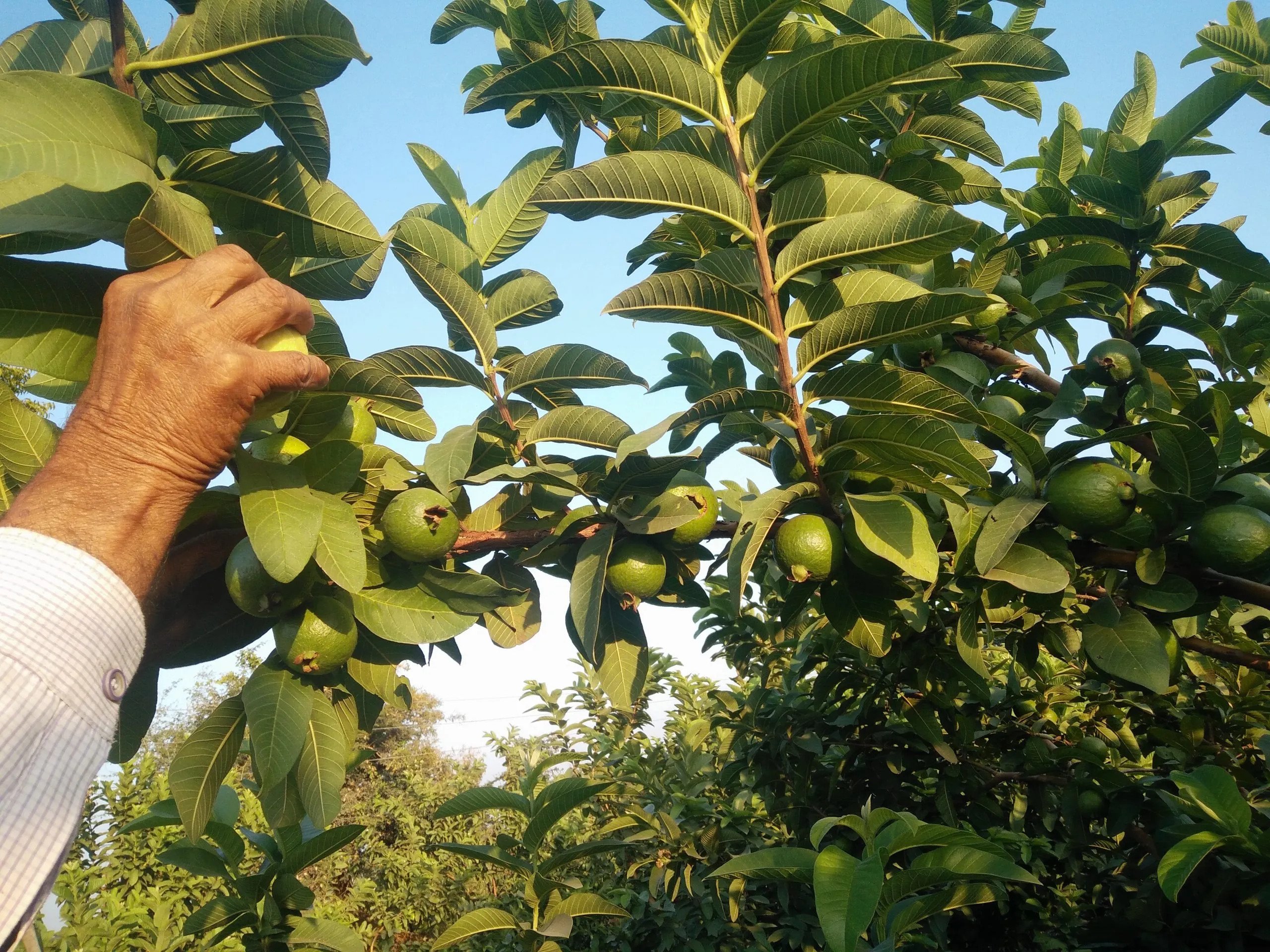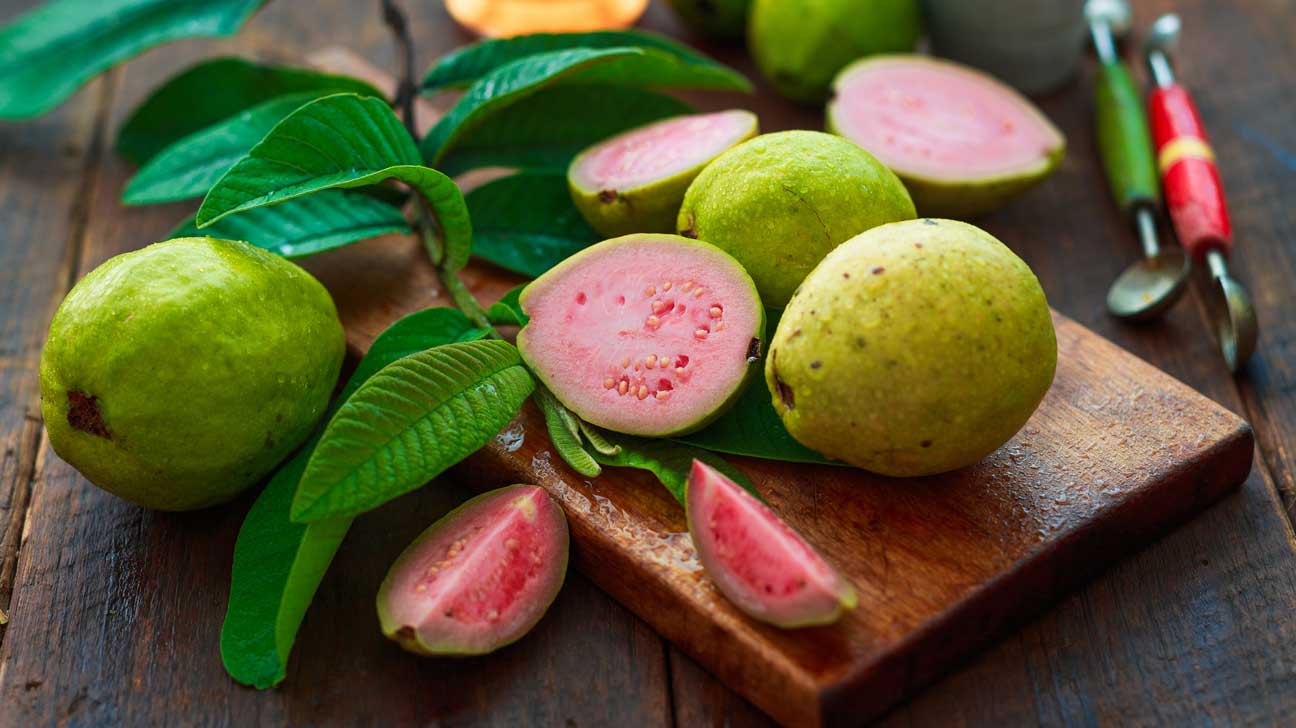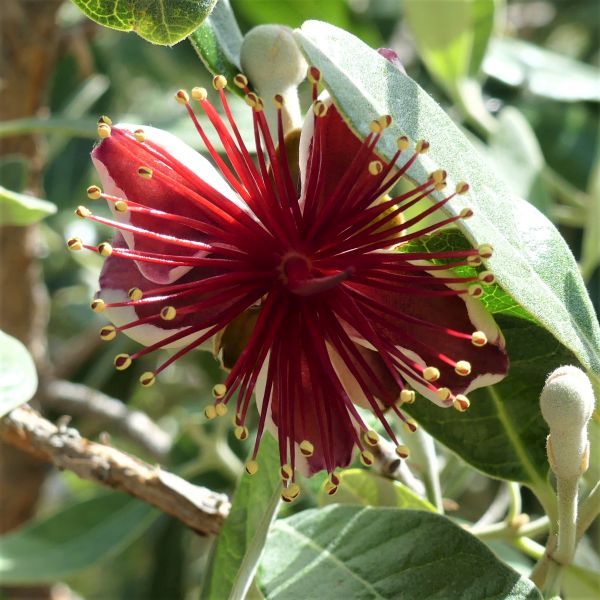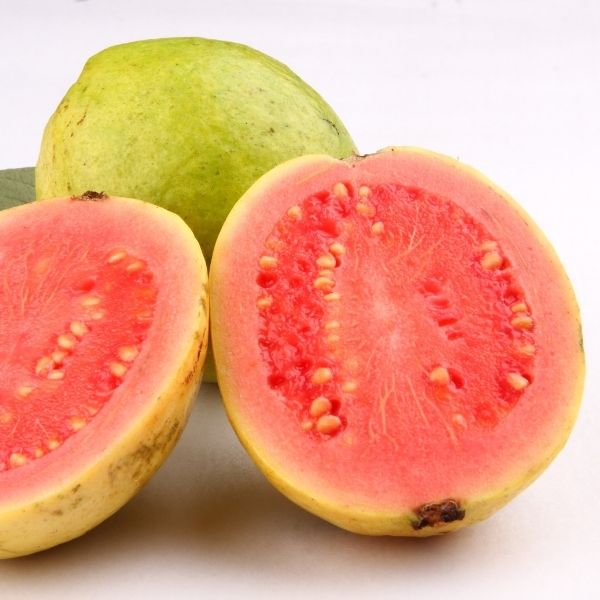Ship to: 43215 Update

- Plants
- Fruit Trees
- Tropical Fruits
- Guava Trees
Plants Filter
Current Filters
Mature Height
Sunlight
Plant Type
Guava Trees
The guava tree, scientifically known as Psidium guajava, is a small to medium-sized tropical evergreen tree belonging to the Myrtaceae family. Native to Central America, guava trees are now cultivated in many warm regions worldwide for their delicious and aromatic fruits, also known as guavas. Guava trees have smooth, green to red-brown bark and glossy green leaves with a distinctive fragrance. The fruits can vary in size, shape, and color depending on the variety.

Varieties: There are several guava varieties, each with unique fruit characteristics. Some common guava varieties include:
- White Guava: These guavas have greenish-white flesh with a sweet flavor and are often used for eating fresh or making juice.
- Pink Guava: Pink guavas have pink or reddish flesh with a sweet-tart flavor. They are also used for fresh consumption and juice making.
- Red Guava: Red guavas have red or pinkish flesh and a slightly stronger flavor compared to white and pink varieties.

Care Tips:
- Climate: Guava trees thrive in tropical and subtropical climates with warm temperatures. They are sensitive to frost and cold temperatures, so protection may be needed in cooler regions.
- Sunlight: Guava trees require full sun exposure to produce high-quality fruits.
- Soil: Guava trees prefer well-draining soil that is rich in organic matter. They can tolerate a wide range of soil types but prefer slightly acidic to neutral pH levels.
- Watering: Young guava trees need regular watering to establish their root systems. Once established, they are relatively drought-tolerant, but consistent moisture is beneficial for fruit development.
- Fertilization: Fertilize guava trees with a balanced fertilizer during the growing season to promote healthy growth and fruit production.
- Pruning: Prune guava trees to shape them, remove dead or diseased branches, and improve air circulation.

Uses:
- Fresh Consumption: Guavas are delicious when eaten fresh, offering a sweet and aromatic flavor.
- Juices and Beverages: Guavas are commonly used to make fresh juices, smoothies, and tropical beverages.
- Jams and Preserves: Guavas can be cooked down to make flavorful jams, jellies, and fruit preserves.
- Guava Pastries and Desserts: Guavas are used as filling for pastries, desserts, and cakes.
Guava trees are not only valued for their tasty fruits but also for their ornamental beauty. They have attractive foliage, fragrant flowers, and provide shade in warm climates. Guava trees are relatively easy to grow and can produce abundant fruit when provided with suitable growing conditions and proper care. They are a delightful addition to tropical gardens and provide a taste of the tropics with their juicy and aromatic guavas.
Item has been added to your cart.



